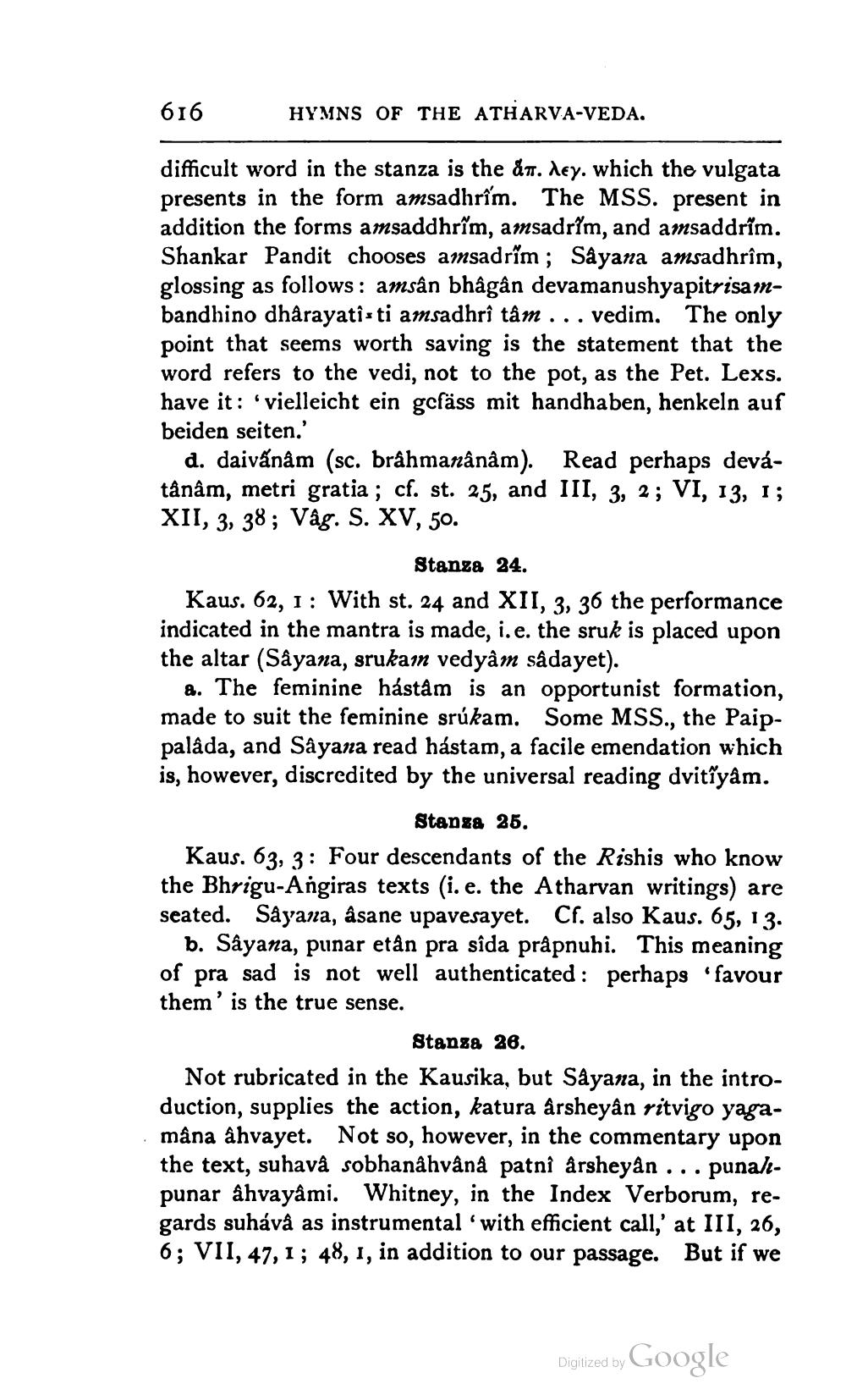________________
616
HYMNS OF THE ATHARVA-VEDA.
difficult word in the stanza is the dr. dey. which the vulgata presents in the form amsadhrím. The MSS. present in addition the forms amsaddhrîm, amsadrim, and amsaddrim. Shankar Pandit chooses amsadrsm; Sayana amsadhrîm, glossing as follows: amsân bhågân devamanushyapitrisambandhino dhårayatîsti amsadhrî tâm ... vedim. The only point that seems worth saving is the statement that the word refers to the vedi, not to the pot, as the Pet. Lexs. have it: 'vielleicht ein gefäss mit handhaben, henkeln auf beiden seiten.'
d. daivānam (sc. brâhmanânâm). Read perhaps devátânâm, metri gratia ; cf. st. 25, and III, 3, 2 ; VI, 13, 1; XII, 3, 38; Vâg. S. XV, 50.
Stanza 24. Kaus. 62, 1: With st. 24 and XII, 3, 36 the performance indicated in the mantra is made, i.e. the sruk is placed upon the altar (Sayana, srukain vedyâm sâdayet).
a. The feminine hástam is an opportunist formation, made to suit the feminine srúkam. Some MSS., the Paippalåda, and Sayana read hástam, a facile emendation which is, however, discredited by the universal reading dvitîyâm.
Stanza 25. Kaus. 63, 3: Four descendants of the Rishis who know the Bhrigu-Angiras texts (i. e. the Atharvan writings) are seated. Såyana, âsane upavesayet. Cf. also Kaus. 65, 13.
b. Sâyana, punar etån pra sîda prápnuhi. This meaning of pra sad is not well authenticated: perhaps "favour them' is the true sense.
Stanza 26. Not rubricated in the Kausika, but Sayana, in the introduction, supplies the action, katura arsheyân ritvigo yagamâna ähvayet. Not so, however, in the commentary upon the text, suhava sobhanâhvâna patni årsheyân ... punalpunar ähvayami. Whitney, in the Index Verborum, regards suhávå as instrumental with efficient call,' at III, 26, 6; VII, 47, 1; 48, 1, in addition to our passage. But if we
Digized by Google




